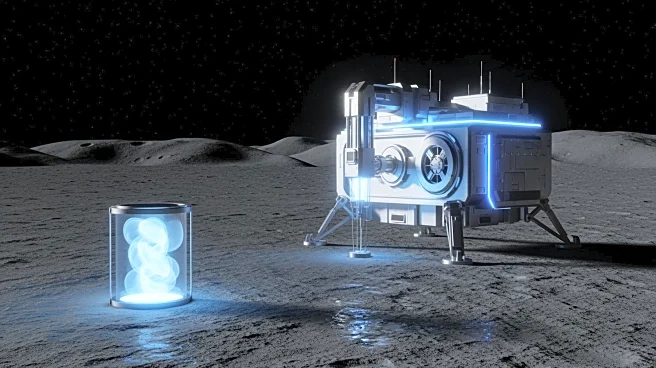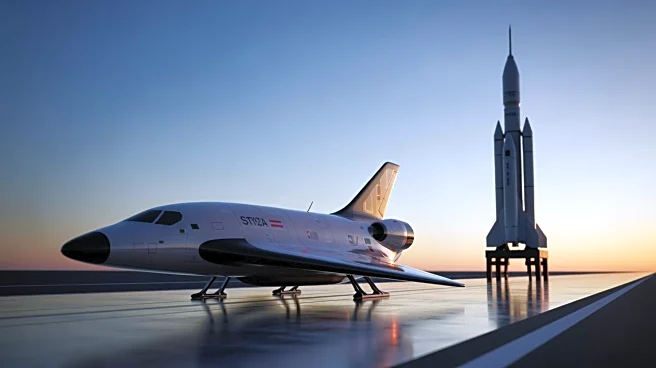What's Happening?
In January 2005, NASA's Cassini spacecraft delivered the Huygens lander to Titan, Saturn's largest moon, marking the first mission to land on a body in the outer solar system. Among the data collected,
a photograph taken 8 kilometers above Titan's surface has remained a focal point of scientific uncertainty. The image reveals branching channels etched into Titan's icy terrain, suggesting fluvial erosion. However, the exact liquid responsible for these formations is debated, as Titan is too cold for water to flow. The prevailing theory suggests liquid methane acts similarly to water on Earth, raining down and forming rivers and lakes. Despite laboratory experiments and atmospheric models supporting this mechanism, the timing, frequency, and driving forces behind the methane flows remain unknown.
Why It's Important?
The ongoing mystery surrounding the Huygens image highlights Titan's potential as a natural laboratory for studying abiotic organic synthesis under conditions not replicable on Earth. Titan's atmosphere, composed primarily of nitrogen and methane, mirrors early Earth's composition, minus warmth and liquid water. This similarity fuels debates about Titan's prebiotic nature and its potential for life. The surface haze, composed of tholins, complex organic compounds, is considered a potential building block for life. Understanding Titan's geomorphological features and atmospheric chemistry could provide insights into planetary evolution and the conditions necessary for life.
What's Next?
NASA's upcoming Dragonfly mission, scheduled for launch in 2028, aims to further explore Titan's surface. Unlike the stationary Huygens lander, Dragonfly will be a rotorcraft lander capable of traversing Titan's surface, analyzing its chemistry for signs of complex organics and possible precursors to metabolism. The mission will focus on the equatorial dune fields, believed to preserve some of Titan's oldest surface materials. Dragonfly's extended operation will transform a brief snapshot into a comprehensive planetary-scale field study, potentially unraveling Titan's mysteries and contributing to our understanding of life's origins.
Beyond the Headlines
Titan's unique environment offers a glimpse into the conditions of early Earth, providing a frozen archive of planetary evolution. The study of Titan's surface and atmosphere could lead to breakthroughs in understanding abiotic organic synthesis and the potential for life beyond Earth. The Dragonfly mission represents a significant shift in exploration strategy, emphasizing mobility and long-term study to unlock Titan's secrets.











